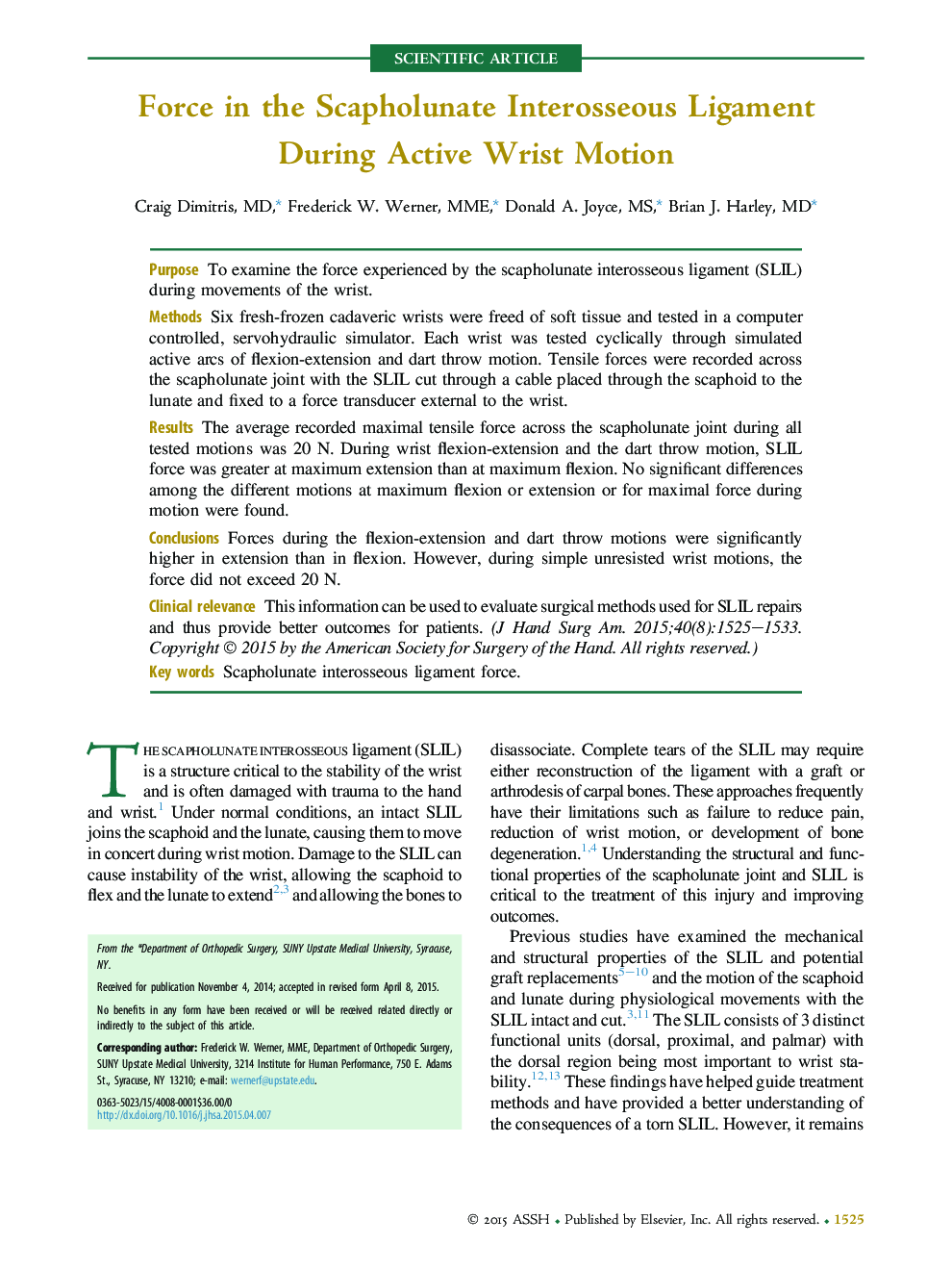| کد مقاله | کد نشریه | سال انتشار | مقاله انگلیسی | نسخه تمام متن |
|---|---|---|---|---|
| 4066477 | 1604354 | 2015 | 9 صفحه PDF | دانلود رایگان |
PurposeTo examine the force experienced by the scapholunate interosseous ligament (SLIL) during movements of the wrist.MethodsSix fresh-frozen cadaveric wrists were freed of soft tissue and tested in a computer controlled, servohydraulic simulator. Each wrist was tested cyclically through simulated active arcs of flexion-extension and dart throw motion. Tensile forces were recorded across the scapholunate joint with the SLIL cut through a cable placed through the scaphoid to the lunate and fixed to a force transducer external to the wrist.ResultsThe average recorded maximal tensile force across the scapholunate joint during all tested motions was 20 N. During wrist flexion-extension and the dart throw motion, SLIL force was greater at maximum extension than at maximum flexion. No significant differences among the different motions at maximum flexion or extension or for maximal force during motion were found.ConclusionsForces during the flexion-extension and dart throw motions were significantly higher in extension than in flexion. However, during simple unresisted wrist motions, the force did not exceed 20 N.Clinical relevanceThis information can be used to evaluate surgical methods used for SLIL repairs and thus provide better outcomes for patients.
Journal: The Journal of Hand Surgery - Volume 40, Issue 8, August 2015, Pages 1525–1533
